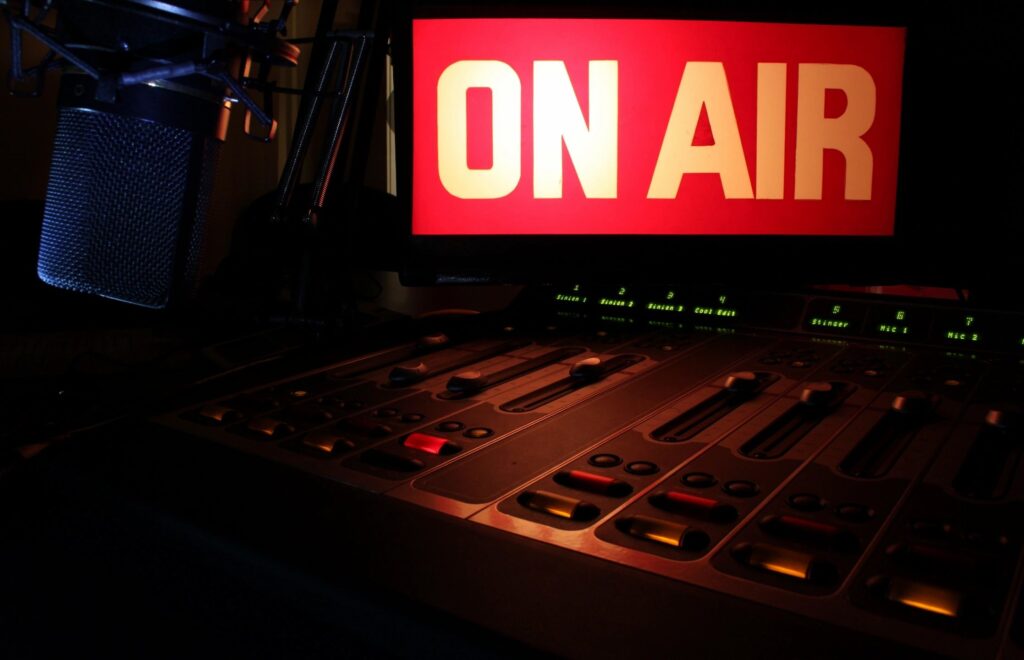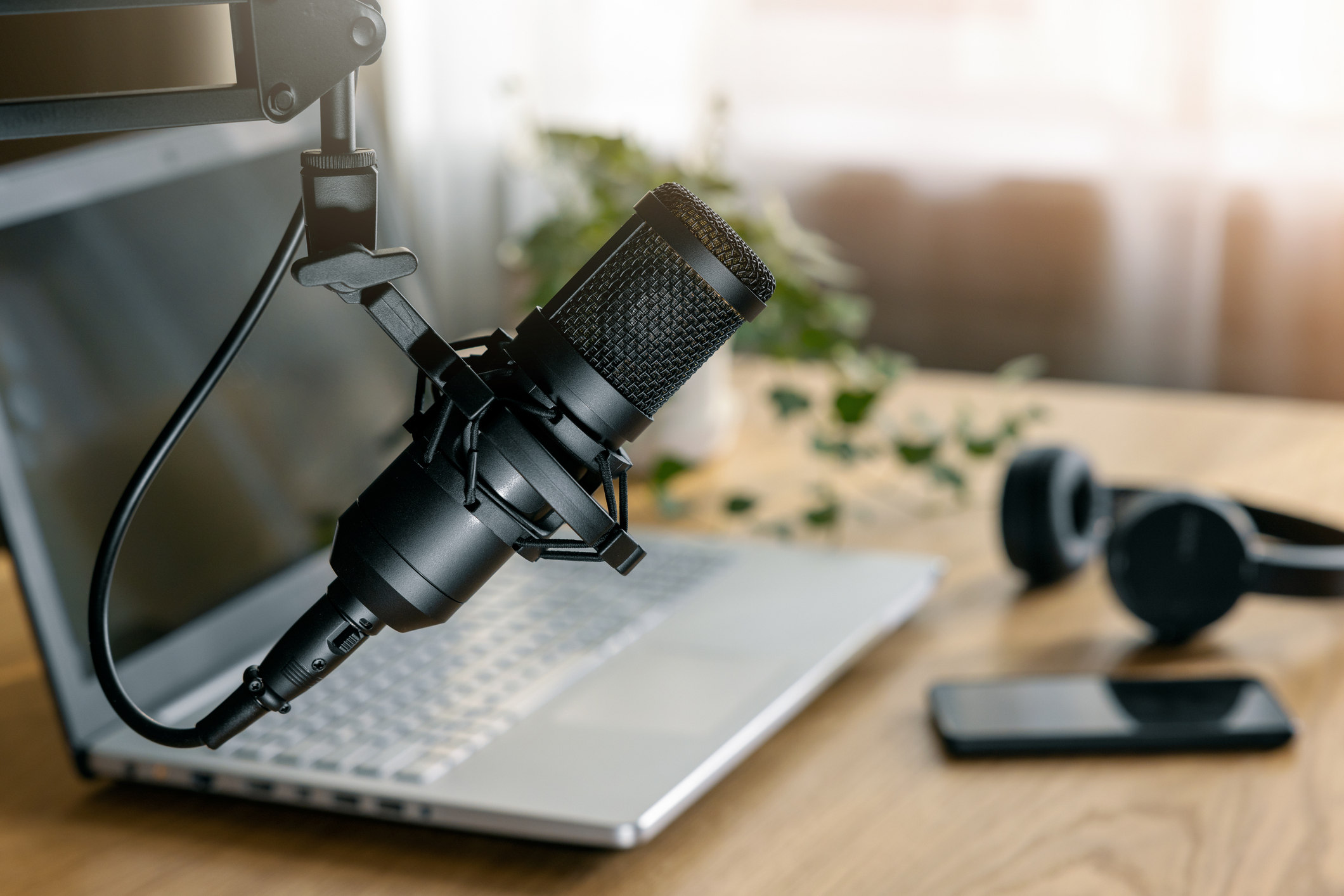If you’ve been wondering how to start a podcast, you’re not alone. With the rise in popularity of podcasts, more and more people are interested in creating their own shows and sharing their unique voices with the world. However, the thought of starting a podcast from scratch can be overwhelming for beginners. Where do you even begin?
In this comprehensive guide, I’ll walk you through the process of how to start a podcast, from planning and recording to publishing and promoting. By the end, you’ll know how to start a podcast and have all the tools and knowledge you need to join the ever-growing community of podcasters.
Understanding Podcasting: Why Start Your Own?
Podcasting has become a cultural phenomenon. Millions of listeners subscribe and tune in to their favorite shows every day. There are plenty of these listeners who want to know how to start a podcast. But why should you start your own podcast? Well, the reasons are plentiful.
First and foremost, starting a podcast allows you to share your unique voice and perspective with the world. Podcasting gives you a platform to express your thoughts, ideas, and passions. Whether you want to discuss a specific topic, interview exciting guests, or share your experiences, podcasting allows you to have a voice and connect with like-minded individuals.
Additionally, podcasting can be a form of personal growth and development. As you research and prepare for each episode, you’ll learn more about your chosen topic. It’s an opportunity to dive deep into subjects that interest you and continuously learn.
Moreover, podcasting can help you build a community and connect with listeners who share your interests. You can engage with your audience, receive feedback, and create meaningful relationships. It’s a gratifying feeling to know that your words and stories resonate with others.
How to Start a Podcast: Crafting Your Podcast Concept and Choosing a Topic
So you’ve decided to start your own podcast, but now comes the fun part: crafting your podcast concept and choosing a topic. This is where you let your creativity shine and think about what you’re genuinely passionate about.
When choosing a topic for your podcast, think about what interests you the most. What are you knowledgeable about or eager to learn more about? This will help you maintain enthusiasm and keep your content fresh and engaging. Remember, podcasting is a long-term commitment, so choose a topic that you can see yourself exploring for months or even years to come.
Consider your target audience as well. Who do you want to reach with your podcast? What kind of conversations or information would they find valuable? Understand your audience’s needs and interests. Doing this will help you tailor your content to meet their expectations.
Don’t be afraid to niche down. A podcast focusing on a specific topic or audience can attract a more loyal and engaged following. Plus, it sets you apart from the countless other podcasts out there.
Once you have a general topic, brainstorm ways to make it unique. What angle or view can you bring to the table? How can you make your podcast stand out from the competition? The more you can differentiate yourself, the better your chance of capturing listeners’ attention.

How to Start a Podcast: Equipment and Software
So you’ve got your podcast concept and topic all figured out, and now it’s time to dive into the technical side of things. Don’t worry if you’re not a tech wizard – starting a podcast doesn’t require a professional studio setup. With the right equipment and software, you can produce high-quality episodes from the comfort of your own home.
Regarding equipment, the two essentials you’ll need are a microphone and headphones. A good USB microphone, such as the Blue Yeti (this is what I use) or Audio-Technica ATR2100x, is a popular choice for beginners. These microphones offer exceptional sound quality and are easy to set up. As for headphones, any decent pair will do the job, but it’s essential to invest in ones that provide accurate audio reproduction so you can hear any potential issues while recording or editing.
Regarding software, there are plenty of options to choose from. Audacity is a free and beginner-friendly audio editing software that offers all the basic features you’ll need. You can use Audacity or software like Zencastr or SquadCast, which allows you to record remote guest interviews. Additionally, you’ll need a podcast hosting platform, such as Libsyn or Podbean, to store and distribute your episodes to podcast directories like Apple Podcasts and Spotify.
How to Start a Podcast: Preparing your First Episode
Now that your podcast concept and topic are locked in, it’s time to prepare for your first episode. This is where the real fun begins! But it can also feel nerve-wracking. Don’t worry; I’ve got some tips and tricks to help you feel confident and ready to hit that record button.
First, create an outline for your episode. Think about the main points you want to cover and any key questions or talking points you want to address. Outlining your topics will help you stay organized during the recording process.
Next, practice! Take some time to do a few dry runs of your episode. This will help you get comfortable with your content and improve your delivery. You can even record yourself and listen back to identify areas that need improvement.
When it comes time to record, find a quiet space where you won’t be interrupted. Use a script or your outline as a guide, but don’t be afraid to let your personality shine through. Remember, your podcast is an opportunity to share your unique voice with the world.
After recording, thoroughly listen to your episode and make any necessary edits. Cut out any awkward pauses or mistakes, and ensure the audio quality is top-notch. It’s worth investing some time in editing to ensure your listeners have the best possible experience.
Lastly, add any enhancements to your episode. This can include background music, sound effects, or even guest interviews. These enhancements can add depth and interest to your episode, making it more engaging for your listeners.
Recording, Editing, and Enhancing Your Podcast
Now that you’ve recorded your first episode, it’s time to dive into the next step: editing and enhancing your podcast. This is where you bring your episode to life and make it shine.
First, let’s talk about editing. Use your chosen audio editing software, like Audacity, to trim awkward pauses or mistakes and ensure a smooth flow throughout the episode. Pay attention to the audio quality and make any necessary adjustments to ensure your listeners have the best possible experience.
Next, consider adding enhancements to your episode. This can include background music, sound effects, or even guest interviews. These additions can add depth and interest to your podcast, making it more engaging for your audience.
When enhancing your episode, make sure to strike a balance. The enhancements should complement your content and not overpower it. Remember, the focus should always be on your unique voice and the valuable information you’re providing.

How to Start a Podcast: Hosting and Publishing
So you’ve recorded and edited your first few episodes, and now it’s time to get your podcast out there and start building your audience. Hosting and publishing your podcast may seem daunting, but with the proper steps, it’s actually pretty simple.
The first step is to find a podcast hosting platform. This is where you will upload your episodes and store all the necessary files. There are many hosting platforms to choose from, such as Libsyn, Podbean, and Anchor. Take the time to research their features and compare pricing and user reviews to find the best fit for your podcast.
Once you’ve chosen a hosting platform, you’ll need to create an account and upload your episodes. Most hosting platforms provide easy-to-follow instructions and guides to help you through the process. They will generate an RSS feed for your podcast, which is a unique URL that will allow podcast directories like Apple Podcasts and Spotify to syndicate your episodes.
After you’ve uploaded your episodes and obtained your RSS feed, it’s time to submit your podcast to podcast directories. This is where people will discover and listen to your podcast. The most important directories to submit to are Apple Podcasts, Spotify, Google Podcasts, and Stitcher. Each directory has its own submission process, but they are usually straightforward and require basic information about your podcast.
Once your podcast is live on the directories, it’s time to promote it. Share your podcast on social media, your personal website, and any other platforms where your target audience is present. Engage with your listeners by responding to comments and reviews, and encourage them to share your podcast with their friends and followers.
How to Start a Podcast: Marketing Your Podcast
So, you’ve created your podcast and are now ready to build an audience and get your voice heard. Marketing your podcast is essential for growing your listener base and reaching new people who may be interested in what you have to say.
Firstly, start by leveraging your existing network. Promote your new podcast episodes on your social media platforms. Ask your friends and family to help spread the word. Respond to comments and reviews, and encourage your listeners to share your podcast with their networks.
Secondly, consider collaborating with other podcasters or influencers in your niche. Guest appearances on other shows or participating in podcasting events can expose your podcast to a broader audience and help you gain credibility in your industry.
Additionally, make sure to optimize your podcast for search engines. Use relevant keywords in your podcast titles, descriptions, and episode summaries. This will help people find your podcast when searching for related topics.
Overcoming Challenges and Staying Consistent
Starting a podcast can be exciting and fulfilling, but it’s not without challenges. As with any creative endeavor, it’s important to stay consistent and overcome the obstacles that may come your way.
One common challenge podcasters face is maintaining a regular publishing schedule. Life can get busy, and it’s easy to fall behind on your episodes. To overcome this, create a content calendar and plan your episodes in advance. Set aside dedicated time each week for recording and editing, and stick to it as much as possible. Consistency in your podcast releases is key to building a loyal audience.
Another challenge is finding the motivation to keep going, especially when you’re not seeing immediate results. It’s important to remember that podcasting is a long-term commitment, and success takes time. Set realistic goals for yourself, celebrate small wins along the way, and keep reminding yourself of why you started in the first place. Your passion will help keep you going, even when the going gets tough.
Finally, don’t be afraid to seek support and feedback from others. Join online communities or attend podcasting events to connect with fellow podcasters who are going through similar experiences. Building a community around your podcast can provide invaluable support and motivation.
How to Start a Podcast: Let’s Wrap It Up
I hope this post helps answer your questions on how to start a podcast. I hope you noticed that I did not cover monetizing your podcast. I feel that too many people start with the expectation of making some extra cash on the side, but in reality, it doesn’t happen. Sure, there are these phenoms that come out of the gate with tons of viewers, but that’s rare.
Starting a podcast takes time. The key to it all is to just get started. Follow these tips, get some basic equipment and software, and start recording. You won’t regret it. In no time, you’ll quit asking the question of how to start a podcast and be able to answer it on your own.
I Hope You Enjoyed This Post.
Be sure to check out my other posts. I cover everything from content creation to SEO to Social Media. So be sure to give it a look!!
Boost Your Visibility: Innovative Strategies That Will Skyrocket Your Personal Brand
Lights, Camera, iPhone: How to Make a Video on an iPhone for Social Media
Unlock Your Instagram Potential: 10 Instagram Hacks For Effective Engagement
Please leave a comment to let me know if you enjoyed this post, or drop a comment if you didn’t. It’s all good!! And follow me on Instagram and Facebook for more behind-the-scenes stuff.
Until next time, everyone,
Peace, Love, and Happiness


